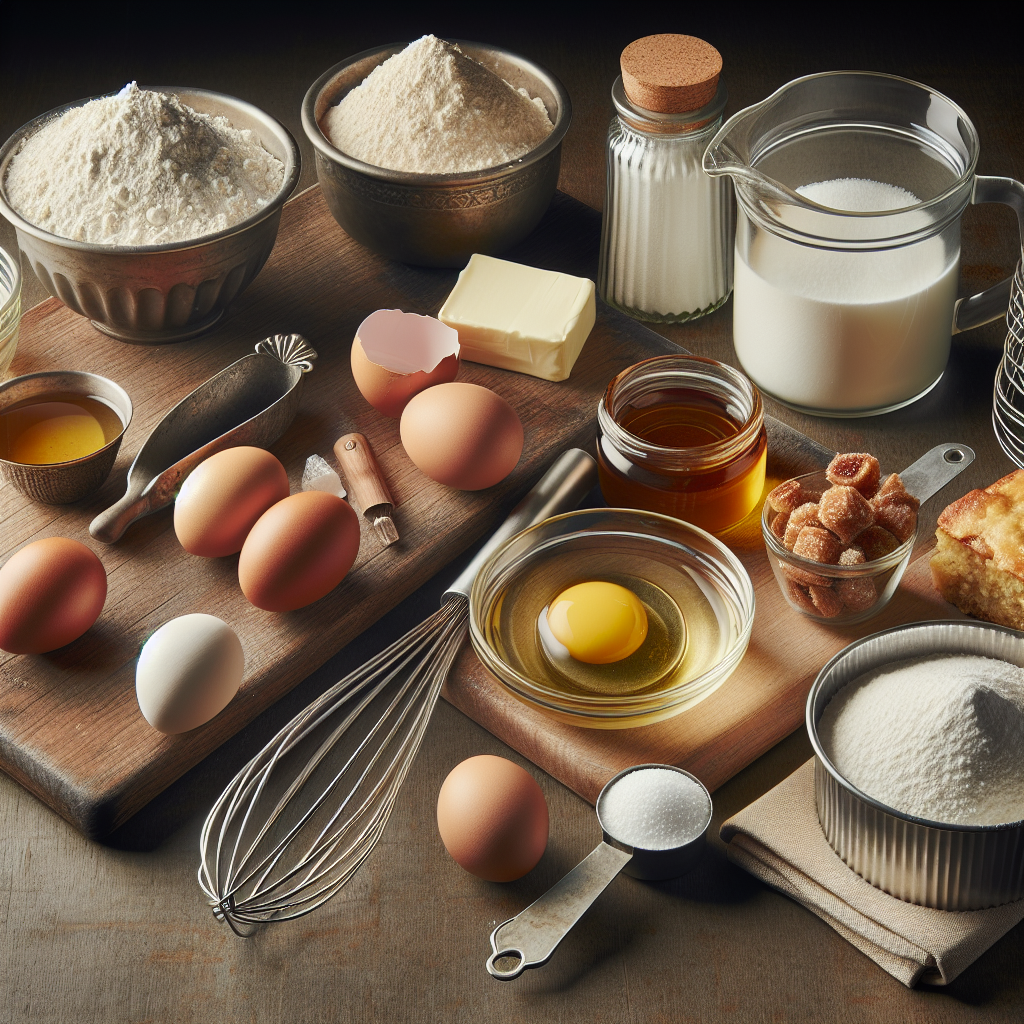Baking is both an art and a science, blending creativity with precise measurements. However, sometimes, you may find yourself in the middle of a recipe only to realize you’re out of a crucial ingredient. Don’t panic! Here’s a guide to common baking ingredient substitutions that can help save your culinary creations.
1. Flour
All-Purpose Flour:
- Substitutes: Whole wheat flour (use 1:1 for a denser texture), almond flour (use slightly less due to higher fat content), or a gluten-free flour blend.
Cake Flour:
- Substitute: Use all-purpose flour with cornstarch (for every cup of cake flour, use 1 cup all-purpose flour minus 2 tablespoons, then add 2 tablespoons of cornstarch).
2. Sugar
Granulated Sugar:
- Substitutes: Brown sugar (use the same amount; it will add moisture and a slight molasses flavor), honey (use 3/4 cup of honey for every cup of sugar, reducing liquid in the recipe by 1/4 cup), or coconut sugar (1:1 ratio).
Powdered Sugar:
- Substitute: Blend granulated sugar in a food processor until powdered.
3. Eggs
Whole Eggs:
- Substitutes: Unsweetened applesauce (1/4 cup per egg), mashed banana (1/4 cup per egg), or a commercial egg replacer (follow package instructions).
Egg Whites:
- Substitutes: 2 tablespoons of liquid from a can of chickpeas (aquafaba) can replace one egg white.
4. Butter
Unsalted Butter:
- Substitutes: Margarine (use the same amount), coconut oil (also 1:1, though it may add a coconut flavor), or vegetable oil (substitute 1/4 cup less than the amount of butter needed).
Shortening:
- Substitute: Use the same amount of unsalted butter or margarine.
5. Milk
Whole Milk:
- Substitutes: Non-dairy milk (almond, soy, oat; use 1:1 while considering flavor impact), yogurt (1 cup of yogurt can replace 1 cup of milk, possibly increasing thickness), or buttermilk (mix 1 tablespoon of vinegar or lemon juice with enough milk to make 1 cup).
6. Baking Powder and Baking Soda
Baking Powder:
- Substitute: Use 1/4 teaspoon baking soda plus 1/2 teaspoon vinegar or lemon juice for every teaspoon of baking powder.
Baking Soda:
- Substitute: Use 3 times the amount of baking powder, keeping in mind the other leaveners in your recipe.
7. Vanilla Extract
Vanilla Extract:
- Substitutes: Almond extract (use half the amount), maple syrup (same amount), or vanilla bean paste (replace 1:1).
8. Cream Cheese
Cream Cheese:
- Substitutes: Greek yogurt (use the same amount for a tangy flavor), sour cream (1:1 ratio), or mascarpone cheese.
9. Heavy Cream
Heavy Cream:
- Substitutes: Half-and-half (use the same amount, with slightly less whip potential) or evaporated milk (can be used similarly when cooking but will not whip).
Key Tips for Successful Substitutions
-
Understand Texture Changes: Some substitutions, like using whole wheat flour instead of all-purpose flour, may change the texture and density of your baked goods. Adjust expectations accordingly.
-
Flavor Considerations: Ingredients like almond extract and coconut oil can impart distinct flavors, so choose substitutes mindfully based on the desired taste.
- Test and Tweak: Each substitution might require slight adjustments in baking time or temperature. Don’t hesitate to experiment and find what works best for your palate.
Conclusion
Whether you’re an experienced baker or a novice, knowing how to make ingredient substitutions can empower your baking adventures. With this guide, even if you’re out of a key ingredient, you can still whip up delicious baked goods. Happy baking!

